Active 1991–2003 Allies LibyaNPFL Founded 1991 | Became RUFP Leader Foday Sankoh Ceased operations 2002 | |
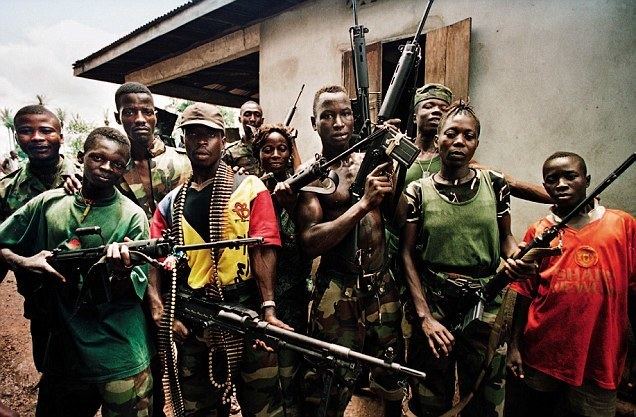 | ||
Opponents Sierra Leone GovernmentECOMOG Founders Foday Sankoh, Charles Taylor | ||
Revolutionary United Front (RUF) was a rebel army that fought a failed eleven-year war in Sierra Leone, starting in 1991 and ending in 2002. It later developed into a political party, which existed until 2007. The three most senior surviving leaders, Issa Sesay, Morris Kallon and Augustine Gbao, were convicted in February 2009 of war crimes and crimes against humanity.
Contents
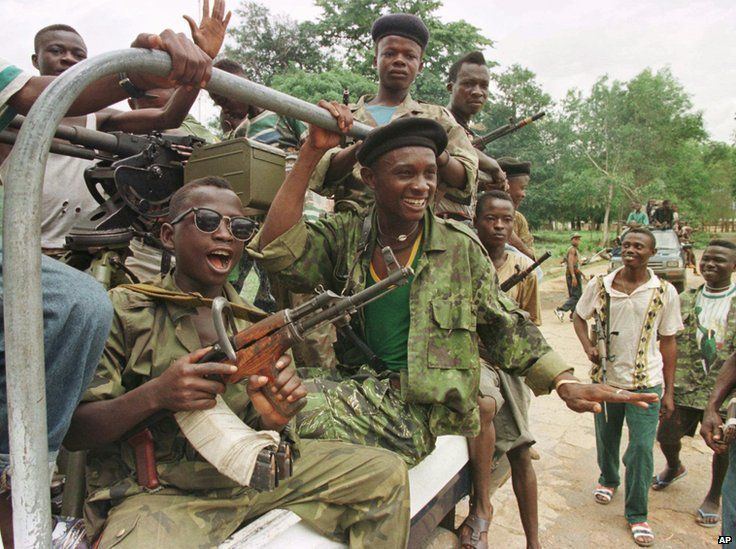
Creation
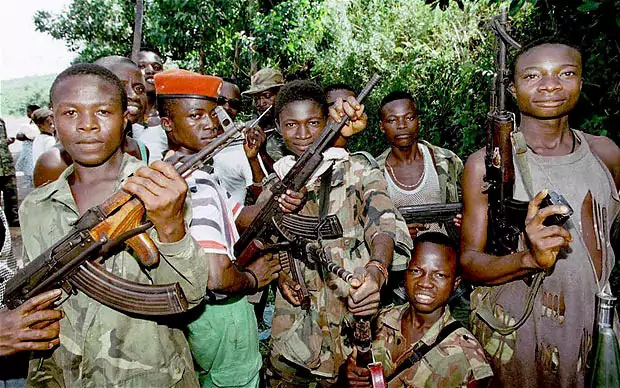
The Revolutionary United Front initially coalesced as a group of Sierra Leoneans which led National Patriotic Front of Liberia elements across the border in an attempt to replicate Charles Taylor's earlier success in toppling the Liberian government.
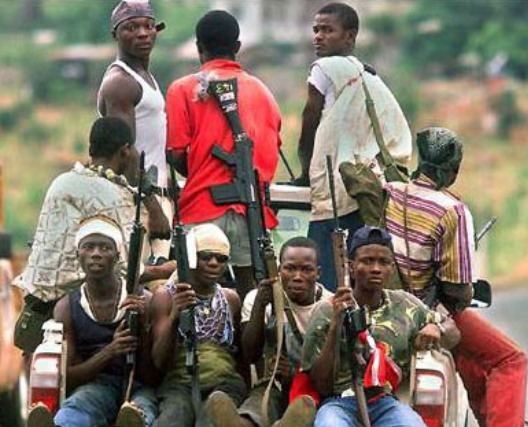
The RUF was created by Foday Sankoh, of Temne and Mende background, and some allies, Abu Kanu, Rashid Mansaray, and the entire Mende tribe in the Southern and Eastern provinces of the country with substantial assistance from Charles Taylor of Liberia. At first, the RUF was popular with Sierra Leoneans, many of whom resented a Freetown elite seen as corrupt and looked forward to promised free education and health care and equitable sharing of diamond revenues. However, the RUF developed a reputation internationally for its terrible cruelty towards the civilian population during its decade-long struggle, especially its practice of hacking off limbs to intimidate and spread terror among the population, and its widespread use of child soldiers.
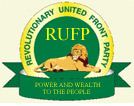
When it was first formed, the RUF put forward the slogan, "No More Slaves, No More Masters. Power and Wealth to the People." While its goal was clearly to change the government of Sierra Leone, the RUF gave little indication of what sort of government would replace it. The group did not advocate Marxism or any similar leftist Ideology, nor did it advocate extreme Nationalism or Fascism. It also did not claim to be a force fighting for a certain ethnic group or region. At one point, during ongoing peace negotiations in 1995, RUF published a pamphlet entitled "Footpaths to Democracy: Toward a New Sierra Leone", which contained some rhetorical references to social justice and pan-Africanism.
Coup
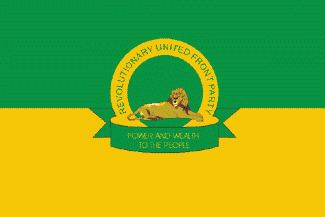
Foday Sankoh did not stand by his earlier promises of equitably sharing of diamond revenues and used these funds to buy arms for himself. With the diamond mines under the control of the rebel party, the RUF became singularly focused on protecting its resource base.
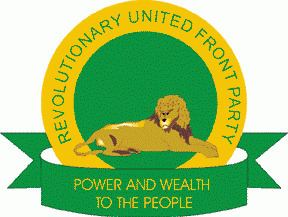
Sierra Leone's economy collapsed, with ordinary citizens trapped between the cruelty of RUF troops and starvation. After a coup by the Armed Forces Revolutionary Council (AFRC) in 1997, the RUF and AFRC created a joint junta to control the country before being evicted from the capital by the invasion of a Nigerian-led West African force that reinstated the rule of President Ahmad Tejan Kabbah. The war is estimated to have cost the lives of 200,000 people.
Child soldiers
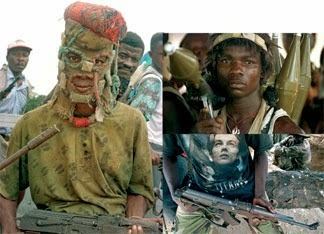
Child soldiers were heavily recruited in the Sierra Leone Civil War; a total of 11,000 are thought to have participated in the conflict. Most were used for attacks on villages and on guard duty at diamond fields as well as guarding weapons stockpiles. Today, about 2000 are still left serving in the military of Sierra Leone. The RUF made extensive use of child soldiers, using horrific methods to numb their new recruits to barbarity.
Thousands of abducted boys and girls were forced to serve as soldiers or as prostitutes, and those chosen to be fighters were sometimes forced to murder their parents. Guerrillas frequently carved the initials "RUF" on their chests, and officers reportedly rubbed cocaine into open cuts on their troops to make them maniacal and fearless.
For entertainment, some soldiers would bet on the sex of an unborn baby and then slice open a woman's womb to determine the winner. The RUF abducted children aged 7 to 12, but were known to take children as young as 5 years old. The children were notoriously known by captains and civilians for their unquestionable obedience and enormous cruelty.
Atrocities
In response to the immediate execution of rebels by government forces, the RUF instituted a policy of cutting off the hands of captured soldiers with the intent of sending the message, "You don't hold your weapon against your brother." Brandishing machetes, RUF rebels amputated the hands, arms, and legs of tens of thousands of Sierra Leoneans. The RUF indicated that the reason for these actions was that amputees could no longer mine diamonds, which might be used to support government troops.
The election slogan at that time was that the people 'had power in their hands', so the RUF would hack the hands off to prevent voting. RUF members are also said to have practiced cannibalism. The government set up a refugee camp where they gathered amputees; the camp was situated next to the international hotels. They also helped fund the camps and gave them food and water.
Foreign intervention
In March 1997, Sankoh fled to Nigeria, where he was put under house arrest, and then imprisoned. From this time until Sankoh's release in 1999, Sam Bockarie performed the task of director of military operations of the RUF. In 1999, an intervention by the USA, the United Kingdom, and other countries as well as the UN resulted in the signing of the Lomé Peace Accord on 7 July 1999.
Sankoh was allowed to return under the conditions of the agreement. However fighting again broke out, and the United Nations sent peacekeeping troops in hopes of integrating the RUF into a new national army. This intervention failed as well, and by 2000 they held 500 UN peacekeepers hostage until their release was negotiated by Taylor. The British and Guineans finally sent in a small professional force in 2001. The RUF was routed following several crushing defeats at the hands of the Indian and British special forces and the revolution ended. Sankoh was captured by a mob and handed to the British where he was indicted for multiple war crimes by a UN-backed court. In 2003 Sankoh died in prison before the trial took place.
Four years later, during the sessions of the Special Court for Sierra Leone, prosecutors claimed that Charles Taylor had actively participated in directing the RUF's strategy from Liberia; among the allegations was that he had arranged to transport RUF commanders to Monrovia to meet with them personally.
Political party
After peace was established, RUF was converted into a political party, the Revolutionary United Front Party. As of 2006 general secretary of the party was Jonathan. In the May 10, 2001, elections the party won 2.2% of popular votes and no seats. Its candidate at the presidential Elections, Alimamy Pallo Bangura, received 1.7% of the vote. The party received its highest voting in Kailahun, 7.8% in the parliamentary election. In July 2007, RUFP merged with the All People's Congress.
